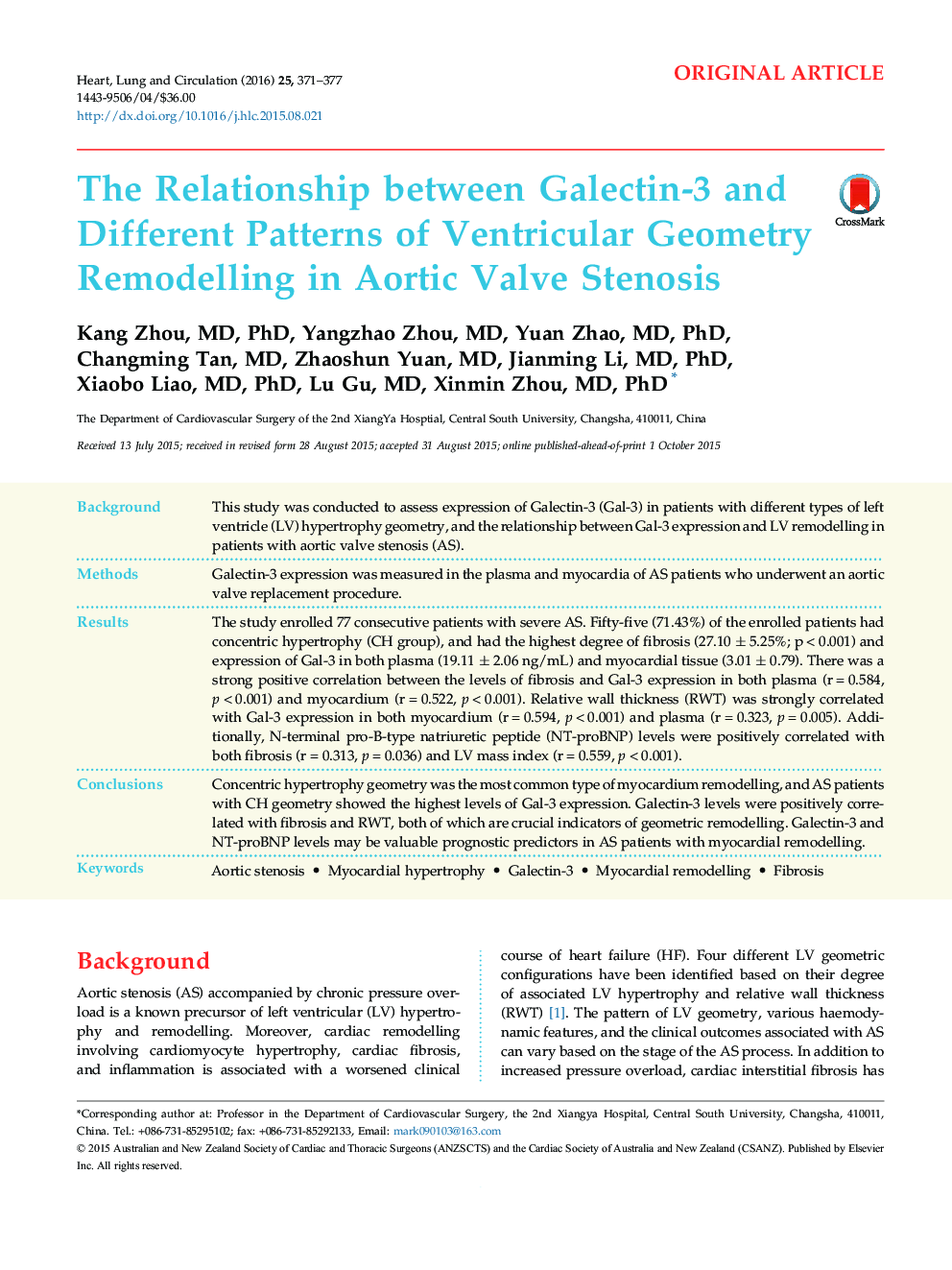| Article ID | Journal | Published Year | Pages | File Type |
|---|---|---|---|---|
| 2916816 | Heart, Lung and Circulation | 2016 | 7 Pages |
BackgroundThis study was conducted to assess expression of Galectin-3 (Gal-3) in patients with different types of left ventricle (LV) hypertrophy geometry, and the relationship between Gal-3 expression and LV remodelling in patients with aortic valve stenosis (AS).MethodsGalectin-3 expression was measured in the plasma and myocardia of AS patients who underwent an aortic valve replacement procedure.ResultsThe study enrolled 77 consecutive patients with severe AS. Fifty-five (71.43%) of the enrolled patients had concentric hypertrophy (CH group), and had the highest degree of fibrosis (27.10 ± 5.25%; p < 0.001) and expression of Gal-3 in both plasma (19.11 ± 2.06 ng/mL) and myocardial tissue (3.01 ± 0.79). There was a strong positive correlation between the levels of fibrosis and Gal-3 expression in both plasma (r = 0.584, p < 0.001) and myocardium (r = 0.522, p < 0.001). Relative wall thickness (RWT) was strongly correlated with Gal-3 expression in both myocardium (r = 0.594, p < 0.001) and plasma (r = 0.323, p = 0.005). Additionally, N-terminal pro-B-type natriuretic peptide (NT-proBNP) levels were positively correlated with both fibrosis (r = 0.313, p = 0.036) and LV mass index (r = 0.559, p < 0.001).ConclusionsConcentric hypertrophy geometry was the most common type of myocardium remodelling, and AS patients with CH geometry showed the highest levels of Gal-3 expression. Galectin-3 levels were positively correlated with fibrosis and RWT, both of which are crucial indicators of geometric remodelling. Galectin-3 and NT-proBNP levels may be valuable prognostic predictors in AS patients with myocardial remodelling.
